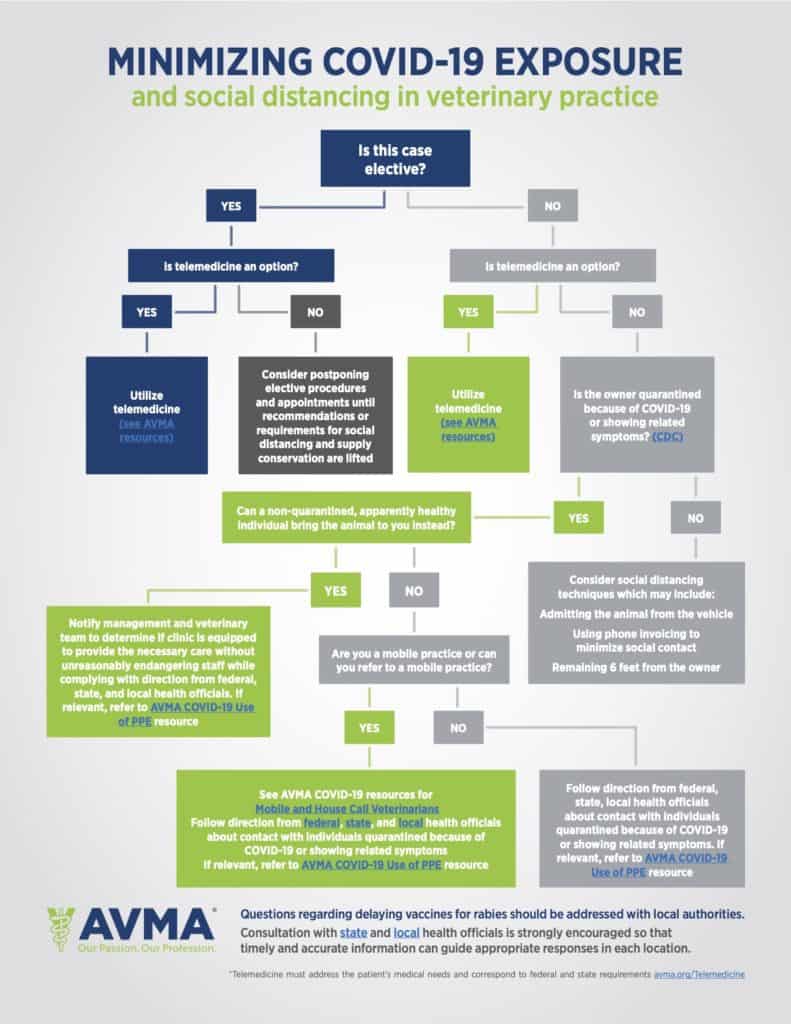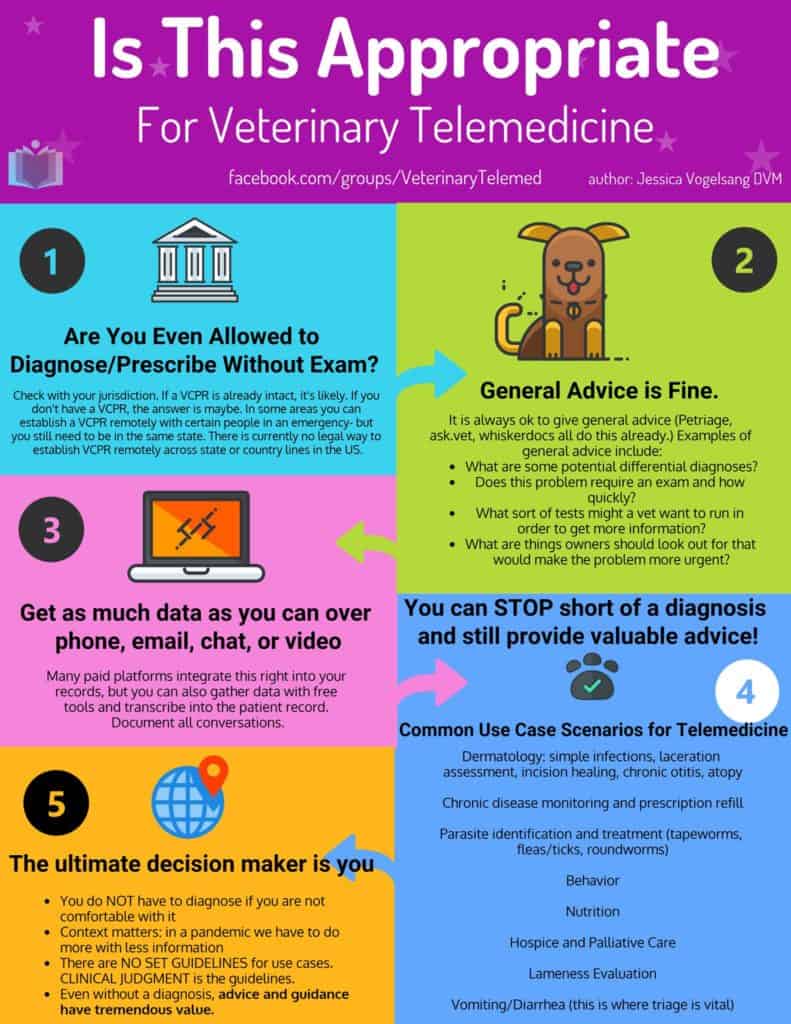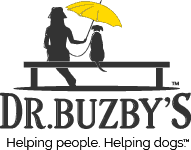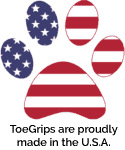Actionable Updates for Veterinarians, by Veterinarians
Telehealth Provider Spreadsheet from the American Veterinary Medical Association
CLICK HERE TO VIEW THE SPREADSHEET
Editor’s Note: Please note that this information is changing rapidly, but nonetheless this remains the most comprehensive resource for exploring veterinary telemedicine options.
“In response to the COVID-19 pandemic, the American College of Veterinary Emergency Critical Care (ACVECC) is working to assemble a list of ventilators that might be made available to human medical providers if needed.
If you have a life support ventilator in your hospital that you would be willing to share with a human facility, please follow the link below. A similar initiative is also underway at American College of Veterinary Anesthesia & Analgesia – ACVAA.” ~Cindy Vaughn Barnes, DVM
ADD TO VENTILATOR LIST
COVID-19 HACCP Protocol
By Dr. Elizabeth Wheeler, DVM, MPH
HACCP – Hazard Analysis and Critical Control Points
Applying the seven HACCP principles make up the major steps to writing a HACCP plan. They
are:
1. Conduct a hazard analysis.
2. Identify critical control points.
3. Establish critical limits for each critical control point.
4.Establish monitoring procedures.
5. Establish corrective actions.
6. Establish record keeping procedures.
7. Establish verification procedures.
For the scope of our practice, Steps 1., 2., and 5. are being evaluated.
Learn more
Pandemic Policy Example by Deanna Armstrong, DVM
The purpose of this policy is to outline provisions related to Time Off Requests, Employee Leave and Pay, and Infection-Control Measures.
This policy outlines steps to safeguard employees’ health and well-being during a pandemic while ensuring our hospital’s ability to maintain operations and continue providing essential services to our clients and patients.
It is the intention of Furever Family Animal Hospital, LLC to protect the health of employees, clients, patients while still providing continuity of services to our clients and patients during times of pandemic or other infectious diseases.
Read More
Compendium of Veterinary Standard Precautions for Zoonotic Disease Prevention in Veterinary Personnel, 2015
A model infection control plan for veterinary clinics.
Practice Management Resource: Send a COVID-19 Smart Newsletter
Access to send a COVID-19 newsletter to your clients for free, if you don’t already have a system in place for emailing your customers. Reliable communication is more important than ever.
THIS SERVICE HAS ENDED
Mask Alternative
The University of Florida Health’s department of anesthesiology has developed 2 prototypes for masks that can be produced in large quantities using materials already found in hospitals and medical facilities. Details and pattern here.
Need support with a case? Free 24 hour instant consultation by veterinary specialists during the COVID-19 pandemic.
THIS SERVICE HAS ENDED
Educate clients about Coronavirus and pets with these free customized client education videos
Learn More
04/03/2020
Free Webinar Friday, April 3rd at 1:00 PM (PDT)
Find out what CARES Act funding is available to your small business impacted by COVID-19.
Congress just passed the Coronavirus Aid, Relief, and Economic Security (CARES) Act which includes financial assistance to businesses.
Jennifer J. Mansfield, CPA will be reviewing what’s in the CARES Act and answering your questions.
Learn:
– How you can qualify for loans in the CARES Act.
– Loan & grant specifics – such as forgiveness, what the money can be spent on, and other qualifications.
– What paperwork you need to start the application process.
This free event will be held virtually Friday, April 3rd at 1:00 PM (PDT).
3/31/2020
The Governor of Michigan states in an executive order: “…all veterinary services, essential and non-essential, must be performed by telemedicine to the fullest extent possible.”
Read More
3/27/2020
From Casey Barton Behravesh, MS, DVM, DrPH, DACVPM
Captain, U.S. Public Health Service Director, CDC One Health Office
Please don’t panic about some of the headlines you are seeing about pets. It is important to confirm any reports you are seeing from official sources. CDC has all of the information you need on our Animals and COVID-19 website (just google CDC COVID-19 Animals).The US government is using a One Health approach to protect human health, animal health and welfare, and mental health during this global pandemic.
Here are some key bits of information important for every veterinarian to know:
– We do not have evidence that companion animals, including pets, can spread COVID-19.
– There is no reason at this time to think that any animals, including pets, in the United States might be a source of infection with COVID-19.
– To date, CDC has not received any reports of pets or other animals becoming sick with COVID-19 in the United States.
– We do not have evidence to suggest that imported animals or animal products imported pose a risk for spreading COVID-19 in the United States.
– At this time, there is no evidence that the virus that causes COVID-19 can spread to people from the skin or fur of pets.
– At this time, routine testing of animals for COVID-19 is not recommended.
– Veterinarians that see animals that have a new, concerning illness and that animal lives with a person with COVID-19 should contact their state public health veterinarian to discuss the situation and the potential for animal testing.
– If you are sick with COVID-19 (either suspected or confirmed), you should restrict contact with pets and other animals, just like you would around other people.
– Although there have not been reports of pets or other animals becoming sick with COVID-19, it is still recommended that people sick with COVID-19 limit contact with animals until more information is known about the virus. This can help ensure both people and animals stay healthy.
– When possible, have another member of your household care for your animals while you are sick. Avoid contact with your pet including, petting, snuggling, being kissed or licked, and sharing food. If you must care for your pet or be around animals while you are sick, wash your hands before and after you interact with them. ·
– Further studies are needed to understand if and how different animals could be affected by COVID-19.
– CDC is working with human and animal health partners to monitor this rapidly evolving situation and will continue to provide updates as information becomes available.
Dr. Behravesh references the CDC website for more details.
3/24/2020
Licensed Health Care Practitioners Can Provide Telemedicine Services to Pennsylvanians During Coronavirus Emergency
Illinois and Georgia are collecting names of veterinary professionals for a database of potential volunteers willing to help in human health care, if needed, in the coming weeks.
For more information in Illinois, contact Stephanie Keating, DVM, DVSc, DACVAA, Service Head, Anesthesia and Pain Management at the University of Illinois, College of Veterinary Medicine.
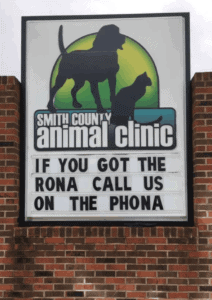
FDA Helps Facilitate Veterinary Telemedicine During Pandemic by temporarily suspending enforcement of portions of the federal VCPR (State VCPR laws still apply, but are also in flux in many states)
As part of the U.S. Food and Drug Administration’s ongoing commitment to combatting the coronavirus (COVID-19) pandemic and providing flexibility across FDA-regulated industries, the agency announced today that it intends to temporarily not enforce certain requirements in order to allow veterinarians to better utilize telemedicine to address animal health needs during the pandemic.
“The FDA recognizes the vital role veterinarians play in protecting public health. This pandemic has had impacts on many of our everyday lives and professions, and during this time, we need to provide veterinarians with the latitude to expand the use of telemedicine in the care of animals, not only pets but also the animals that produce our food,” said FDA Commissioner Stephen M. Hahn, M.D. “The FDA is providing flexibility that will help veterinarians maintain the health of animals during the pandemic, while allowing for the social distancing that is so important in limiting the further spread of coronavirus disease across the country and the world.”
Read More
3/22/2020
From our colleague on the front lines, Barbara Jones, DVM, CVA, MPH, DACVPM
“This is based on current science and will change as research continues into this novel virus. I can cite everything in the current post, but something will be wrong at some point, I’m sure!” ~Dr. Jones
“As a COVID19 responder and an epi/infectious disease boarded specialist (DVM MPH DACVPM), I feel I need to address the innumerous comments on the need for tests. This is long, but I feel important.
Read More
New York State Veterinary Medical Society – COVID-19 Update
Here is a summary of what we are hearing from veterinarians across NY State to help you with your decision making.
Should I stay open?
For most of this week Animal Hospitals were mostly making decisions on their operations based on their (or our lawyer’s) interpretation of the Governor’s Executive Orders.
3/21/2020
Unleashed Veterinary Podcast hosted by Bruce W. Francke, DVM
COVID-19 and You! Veterinary Style with Dr. Carrie Jurney – CLICK HERE
From the NJVMA: COVID-19 AND NJ VETERINARY PRACTICES
The NJVMA agrees with the AVMA position that telemedicine is a useful adjunct for providing care to patients that already have a physically-established VCPR. New Jersey Veterinarians may look at the state’s proposed telemedicine rules which, although not adopted yet, have been approved for adoption by the state Board. Veterinarians should comply with the specifics in the unadopted regulations, but generally, veterinarians should determine if they can provide services through telemedicine to the same standard of care as they would if those services were provided in person. If they cannot do so in their professional judgment, they should not provide services through telemedicine. NJVMA Veterinarians interested in providing this service should review the telemedicine rules at: https://www.njconsumeraffairs.gov/Proposals/Pages/vetmedc-06172019-proposal.aspx
BREAKING NEWS: Veterinary Practices Are Essential For Emergencies
“Governor Cuomo issued Executive Order No. 202.6, requiring, effective March 20, 2020 at 8 pm, that all businesses in the state reduce their in-person workforce at any work location by 75 percent.(Now up to 100%) Any “essential business,” however, is not subject to this restriction.
The New York State Department of Economic Development has issued a list of essential businesses that are exempt and this list includes:
Updated 3/21/2020
– Veterinary and animal health services Emergency veterinary and livestock services (Read full list of EDC exemptions)
Also the Department of Agriculture and Markets have identified some essential businesses that are exempt from reducing on-site personnel (Visit site)
– Food producing farms, fisheries, operations that care for animals…”
– Businesses and vendors supplying goods and services to these essential industries, such as agri-businesses and operations supporting animal health, are also exempt.
We are working with State Officials and our lawyer for further clarification about essential veterinary services such as inoculations to prevent the spread of zoonotic diseases.
Tim Atkinson
NYSVMS
Albany NY
518-869-7867″
3/20/2020
Stacee Santi Longfellow, DVM
“Hi there corona peeps! I made this tutorial for our customers at Vet2Pet and wanted to share it with you in case you are looking for an overview of this combo: Youcanbookme, Stripe [editorial recommendation: use PayPal instead due to challenges with Stripe for vet hospitals], Google cal and Zoom…Good luck and keep washing your hands :)”
From The California Veterinary Medical Board:
Can we dispense medication to a client for use on their animal even though the exam is not current?
Governor Gavin Newsom declared the COVID-19 virus to be a state of emergency in California on March 4, 2020. California law allows veterinarians to provide medications to animal owners during declared states of emergency. The Veterinary Medicine Practice Act states the following:
Business and Professions Code section 4826.4
a. A California-licensed veterinarian at premises registered in accordance with Section 4853 that is located within a 25-mile radius of any condition of emergency specified in Section 8558 of the Government Code may, in good faith, do both of the following in addition to any other acts authorized by law:
- Render necessary and prompt care and treatment to an animal patient without establishing a veterinarian-client-patient relationship if conditions are such that one cannot be established in a timely manner.
- Dispense or prescribe a dangerous drug or device, as defined in Section 4022, in reasonable quantities where failure to provide services or medications, including controlled substances, may result in loss of life or intense suffering of the animal patient. Prior to refilling a prescription pursuant to this paragraph, the veterinarian shall make a reasonable effort to contact the originally prescribing veterinarian.
b. A veterinarian acting under this section shall make an appropriate record that includes the basis for proceeding under this section.
c. A veterinarian who performs services pursuant to this section shall have immunity from liability pursuant to subdivision (b) of Section 8659 of the Government Code.”
5 Actionable Telemedicine Tips During COVID-19
“Do the right thing. Use that as your guiding principle to the best of your ability. Treat people right, provide a value, charge a reasonable fee. Only diagnose and recommend to the level you can defend.”
“Yesterday I spoke with Dr. Rolan Tripp, Executive Director of the Televeterinary Coalition. These were his common sense words of wisdom on how to handle telemedicine as our profession launches into this unknown frontier.
If your practice needs nitty gritty, tangible help with telemedicine, here are some resources to help guide you (I have no personal affiliation with any of them) ~Julie Buzby, DVM
- WEBINAR: Tonight (Friday, March 20) at 5:30 p.m. ET by Babel Bark—BabelVet Overview: Telehealth & Remote Patient Monitoring Solution Description.
- ARTICLE: Petriage’s Telemedicine to the Rescue, in Today’s Veterinary Business.
- ARTICLE: AAHA’s Keep Scheduling Wellness Appointments With Teletriage Service includes an overview of five veterinary telehealth providers.
- PODCAST: Learn about creating a quick-and-dirty version of telemedicine in How to Create a Telemedicine System for Your Practice as explained by Brandon Breshears, host of The Veterinary Marketing Podcast.
- COMING SOON: A comprehensive chart of “veterinary connected care companies” compiled by the AVMA
Elizabeth Miller Smith, DVM
“This made me tear up this morning. I got a call Wednesday from my nurse practitioner. She is smart and kind and helpful and exactly the person you want on the front lines of this. She’s running one of the first testing clinics here and was asking me if she knew anywhere she could get masks and gowns, they had NONE. None. So I boxed up what I had, ordered what I could, and took them to her. I can use cloth masks, I’ve got a surgery gown I can autoclave for emergencies…
Veterinarians, I urge you to follow the AVMA guidelines. The very people who are trying to save us humans from this mess don’t have the proper protective gear. They are literally touching humans who HAVE this virus, and they don’t have the proper protection. We have taken an oath to protect public health, and this is how we can. #giveupyourgear #inthistogether“
Melanie Metz Goble, DVM
“Day 1: Self-imposed isolation.
On Tuesday, I had a difficult situation with a client. He was aggressive and spit when he spoke. He did not allow us to provide the necessary care of his pet, so I don’t know why he even came in. As he was leaving, he announced that he has been sick – fever and upper respiratory infection – and now we are all infected. We don’t know if he was just being a jerk or being honest. We did contact the local health department.
Yesterday, I developed a cough that worsened throughout the day and a sore throat in the evening. I will be receiving my thermometer this afternoon/evening so that I will be able to monitor my temperature. I am staying in isolation for 14 days.
Please, do not go out if you are sick. Please, stay home and quarantine yourself. If you are not sick right now, remember that you are still supposed to stay home or at minimum isolate yourself by maintaining social distance of 6+ feet from others.
If you have a person or animal that needs medical care, please call ahead. Many places are doing urgent and emergency care only. Now is the time to preserve PPE (personal protective equipment) and limit exposure to others so that we can flatten the curve.
In some locations, equipment and veterinarians are being asked to step up and provide equipment and time to help in the human efforts. This is not a joke. It is not a hoax. This is serious. Please treat it as such.”
3/19/2020
“In executive order D2020 009, the governor of Colorado ordered that starting Monday, March 23rd, voluntary/elective procedures have been banned (until April 14th at the earliest). The order also reads:
‘All [veterinary practices] in possession of PPE, ventilators, respirators, and anesthesia machines that are not required for the provision of critical health care services undertake an inventory of such supplies by no later than March 26th, 2020 and prepare to send it to the State of Colorado. I direct the Emergency Operations Center to allocate any supplies received pursuant to this order to support activities related to the COVID-19 response.'”
Colma Police, San Mateo County, California
“San Mateo County is looking for any and all current or retired medical professionals who may be able to assist in response to COVID-19. They need doctors, nurses, dentists, veterinarians, medical assistants, etc. To volunteer please contact [email protected] or 650-997-8300.”
Lauren Smith, DVM
“Dear Veterinary Hospital,
I am writing in regard to the recent developments of the COVID-19 pandemic. I want you to know that I appreciate the hard work and dedication you and your team are putting in in order to continue to provide veterinary care to the community. I know this is a scary time, not only for the health of yourself and your loved ones, but for the health of the business you have worked hard to grow.
I am scheduled to work relief shifts for your hospital in the coming month. I would like you to know that, should the need arise to cancel my shift due to decreased need for non-emergent services, the financial health of your practice, or the presence of ill team members or clients, I will be waiving my normal cancellation fee for any shifts in the month of March or April.
Should you still need my services, I would like to make you aware of a few stipulations. Under normal circumstances, I have always valued reliability as a fundamental trait in a relief veterinarian and strived to always show up and do my best, even when I wasn’t feeling my best. These are not normal times. The decisions I make no longer affect only myself, but the health and wellbeing of the entire community. I will be doing a temperature check prior to any work shifts and should I develop a fever or feel ill in any way, I will institute a self-quarantine and will not be able to work.
I also request written notification of the safety precautions you have taken to protect not only my health while I work there, but the health of your entire team as well as the health of your clients and the community you serve. It is extremely important that as veterinarians we strive to uphold the oath we took to protect the health, not only of animals, but of the public as well. At this time that means conserving personal protective equipment by temporarily suspending elective surgeries such as spays, neuters, and prophylactic dental procedures. It also means instituting social distancing practices to the best of our ability. There are many ways to do this, including postponing vaccine and wellness appointments so as not to encourage clients to risk their health for non-emergent services, instituting curbside services, and/or limiting or eliminating the presence of non-staff members within the building.
If I do not feel that the proper precautions are being taken, I reserve the right to cancel my upcoming relief shift and strongly encourage you to reconsider your policies. These measures may seem extreme, but they will benefit everyone in the long term.
Thank you for your understanding.
Sincerely,
Lauren B. Smith, DVM”
Robert Walter – Practice Owner at Stafford Oaks Veterinary Hospital
“Everyone needs to do this today:
1. Call landlord and ask for rent relief for the next 3-6 months. Effective immediately. Offer to add the months onto the end of your lease or to amortize the amount over the remaining payments once you start paying again. Most will do this because they know they aren’t going to be able to lease it anytime soon and it will be better to keep you there and help you survive.
2. Call all your loan lenders. Ask for disaster relief deferral on your loans for 3 months. Effective immediately. Same thing offer to add payments at end or to amortize over the remaining payments. Tell them you need to keep all cash on hand to pay employees and weather the storm.
3. Ask big suppliers for 3 month terms on paying back for orders. Anything to keep cash on hand.
Please at least do 1&2. The goal here is to keep as much cash on hand and not to be able to keep employees and stay in business when this is over.”
Cindy Vaughn Barnes, DVM
“I’m going to try and make this as simple as possible for my colleagues, since even the AVMA hasn’t convinced you.
Human hospitals manage their inventory (COGS) on a “just-in-time” basis, the way most efficient animal hospitals do. What that means, is that they will only have a 1-2 week supply of equipment, supplies and medication on hand, at any given time.
Now that COVID-19 is here and the hospitals are flooded all at once, and because the supply chain has been disrupted (most of our supplies come from China), the human hospitals don’t and won’t have enough critical PPE to take care of humans. I pray that you will never need to go to the hospital during this pandemic, but if you do, you’d want them to be able to take care of you, no?
This is why the AVMA, the AMA, and your fellow colleagues are asking you to 1. stop doing elective surgeries and procedures, and 2. donate your surgical gloves and masks if you have an abundant supply.
This is a matter of public health and it’s real whether you want to believe it or not. And thank you to those of you who have taken steps to conserve our precious resources!”
Breaking News: COVID-19. Telemedicine. VCPR. 3/19/2020
“The world is changing so fast that my head is spinning. Last week, the North Carolina State Veterinary Board forbade the practice of Veterinary Telemedicine.
However yesterday, in light of COVID-19 concerns, they issued a more lenient statement: COVID-19 and the Practice of Veterinary Medicine in NC.
A couple hours ago, the Oregon Veterinary Medical Board issued the following statement which removes the requirement of a VCPR to provide Veterinary Telemedicine:
Governor Kate Brown has determined that compliance with certain portions of OAR 875-015-0035 (Veterinary Telemedicine) would prevent, hinder, or delay mitigation of the effects of the COVID-19 emergency.
3/18/2020
Social Distancing and Dogs – Blog by J. Scott Weese, DVM, DACVIM, which includes an Owner Contact Guidelines flowchart
